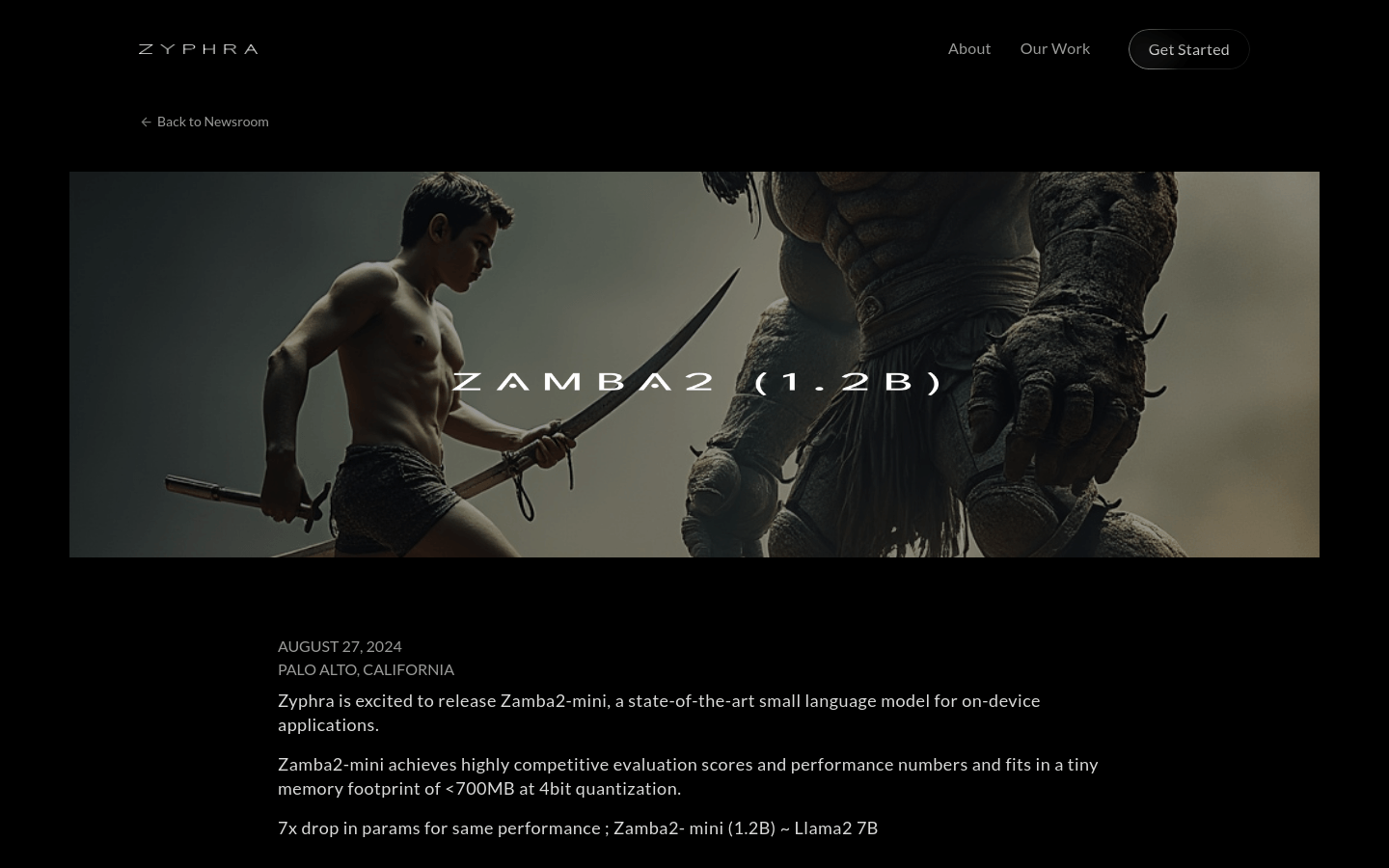

Zamba2 Mini
Overview :
Zamba2-mini is a small language model released by Zyphra Technologies Inc., specifically designed for edge applications. It achieves evaluation scores and performance comparable to larger models while maintaining a minimal memory footprint (<700MB). Featuring 4-bit quantization technology, it offers a 7x reduction in parameters while retaining the same performance characteristics. Zamba2-mini excels in inference efficiency, boasting faster first-token generation times, lower memory overhead, and reduced generation latency compared to larger models like Phi3-3.8B. Furthermore, the model weights have been open-sourced (Apache 2.0), enabling researchers, developers, and companies to leverage its capabilities and push the boundaries of efficient foundational models.
Target Users :
The target audience for Zamba2-mini includes researchers, developers, and companies looking to deploy advanced AI systems on edge devices. It is particularly suited for environments with limited memory capacity and high inference speed requirements, such as mobile devices and embedded systems.
Use Cases
Language understanding and generation tasks in mobile applications.
Natural language interaction in embedded systems.
Rapid text analysis and response in smart devices.
Features
Exceptional inference efficiency and speed in edge environments.
Quality comparable to intensive transformers with 2-3B parameters.
Shared transformer blocks allow for greater parameter allocation to the Mamba2 backbone.
Pre-trained on a dataset of 3 trillion tokens, extensively filtered and deduplicated.
Incorporates an independent 'annealing' pre-training phase to decay learning rates over 100B high-quality tokens.
The Mamba2 block offers extremely high throughput, being 4 times that of comparable parameter transformer blocks.
Model size choices are highly suitable for parallelization on modern hardware.
How to Use
1. Visit the open-source page for Zamba2-mini to obtain the model weights.
2. Integrate the model into your edge application according to the provided documentation and guidelines.
3. Utilize the model for text understanding and generation tasks.
4. Adjust model parameters as necessary to optimize performance according to application needs.
5. Test the inference efficiency and accuracy of the model in an edge environment.
6. Perform necessary model tuning and application iterations based on testing results.
Featured AI Tools

Gemini
Gemini is the latest generation of AI system developed by Google DeepMind. It excels in multimodal reasoning, enabling seamless interaction between text, images, videos, audio, and code. Gemini surpasses previous models in language understanding, reasoning, mathematics, programming, and other fields, becoming one of the most powerful AI systems to date. It comes in three different scales to meet various needs from edge computing to cloud computing. Gemini can be widely applied in creative design, writing assistance, question answering, code generation, and more.
AI Model
11.4M
Chinese Picks

Liblibai
LiblibAI is a leading Chinese AI creative platform offering powerful AI creative tools to help creators bring their imagination to life. The platform provides a vast library of free AI creative models, allowing users to search and utilize these models for image, text, and audio creations. Users can also train their own AI models on the platform. Focused on the diverse needs of creators, LiblibAI is committed to creating inclusive conditions and serving the creative industry, ensuring that everyone can enjoy the joy of creation.
AI Model
6.9M













